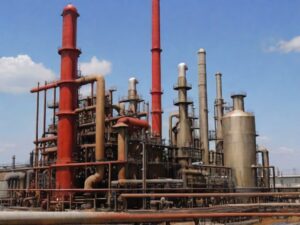As the world becomes increasingly industrialized, the need for safety in hazardous environments has never been more critical. This is where intrinsically safe systems come into play. These systems are designed to limit the energy available for ignition and prevent explosions in hazardous areas. However, implementing these systems is not without its challenges. In this article, we will explore these challenges and how they can be addressed. We invite you to visit Intrinsically Safe Store to learn more about these systems and how they can be beneficial to your operations.
Understanding Intrinsically Safe Systems
Designers create intrinsically safe systems to prevent explosions in hazardous areas by limiting the energy available for ignition. Industries such as oil and gas, mining, and chemical processing use them where there is a high risk of explosion due to the presence of flammable gases or dust.
Challenges in Implementing Intrinsically Safe Systems
Despite their importance, implementing intrinsically safe systems is not without its challenges. These include:
- High Initial Costs: The initial investment required for these systems can be quite high, especially for small and medium-sized enterprises.
- Technical Complexity: These systems are complex and require a high level of technical expertise to install and maintain.
- Regulatory Compliance: There are strict regulations governing the use of these systems, and non-compliance can result in hefty fines and penalties.
- Resistance to Change: Like any new technology, there can be resistance to change from employees who are used to doing things a certain way.

Overcoming the Challenges
While these challenges may seem daunting, they are not insurmountable. Here are some strategies to overcome them:
- Cost-Benefit Analysis: Conduct a cost-benefit analysis to determine the potential savings from preventing accidents and downtime.
- Training and Education: Invest in training and education to ensure that your staff understands the importance of these systems and how to use them effectively.
- Regulatory Compliance: Stay up-to-date with the latest regulations and ensure that your systems are in compliance.
- Change Management: Implement a change management strategy to help your staff adapt to the new systems.
Case Study: Successful Implementation of Intrinsically Safe Systems
A good example of a successful implementation of intrinsically safe systems is in the oil and gas industry. A major oil company implemented these systems in their offshore drilling operations and saw a significant reduction in accidents and downtime. This not only improved safety but also increased productivity and profitability.
Overcoming Challenges in Implementing Intrinsically Safe Systems
Implementing intrinsically safe systems is not without its challenges, but with the right strategies, these can be overcome. The benefits of these systems in terms of safety and productivity far outweigh the initial investment and effort required. We invite you to visit Intrinsically Safe Store to learn more about these systems and how they can be beneficial to your operations. If you have any questions or need further assistance, please feel free to contact us.


























